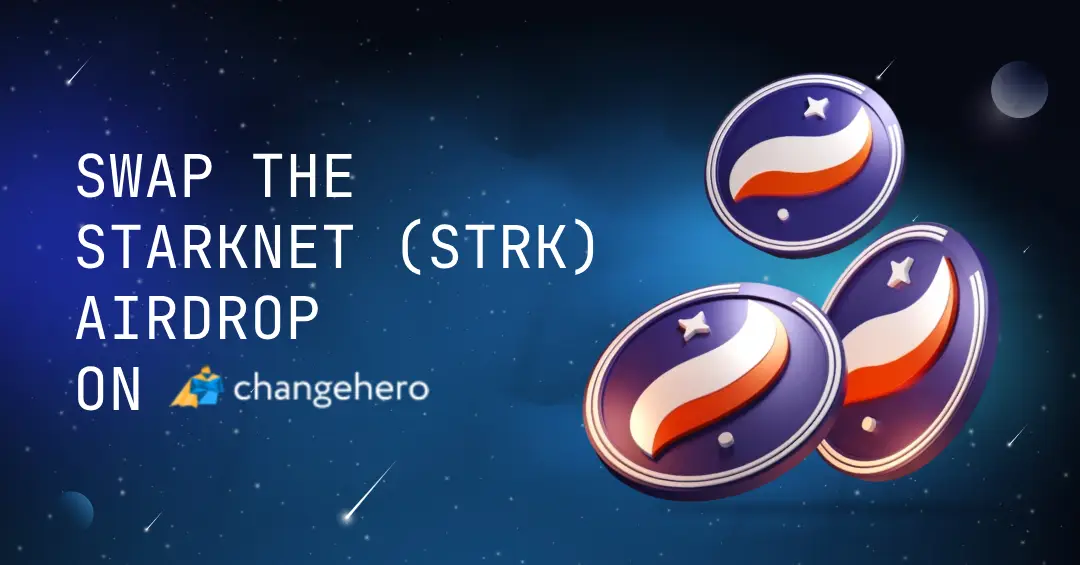Polkadot hit the markets a little less than a year ago but is already one of the projects with the highest evaluation. Read in our new Polkadot guide what is Polkadot aiming to achieve and how DOT quickly gained a position in the top ten.
Key Takeaways
- Polkadot is a multichain protocol that allows the creation of parallel-running chains that can communicate with each other;
- The native token of the network, DOT is used in governance, staking, and parachain creation;
- The direction of development right now is improving the scalability of the Polkadot network.
What is Polkadot?

Polkadot is a blockchain platform that takes the existing technology a step further: its main purpose is to build a system of connected blockchains. The mission of Polkadot is to become a foundation for the decentralized Web, made for users by users.
Polkadot uses a unique consensus algorithm called GRANDPA (GHOST-based Recursive Ancestor Deriving Prefix Agreement). It separates finality from block production, resulting in instant confirmations and fork resistance.
The block production is dictated by the Blind Assignment for Blockchain Extension (BABE) algorithm. BABE dictates block production, GRANDPA finalizes them and Nominated Proof-of-Stake chooses validators to record this in the blockchain.
The platform makes the creation of new chains very easy with parachains, and in return, developers get a secure and scalable blockchain to build on. Existing chains can also connect to the Polkadot ecosystem with the help of blockchain bridges.
What is Polkadot Relay Chain?
The relay chain of Polkadot is the main chain of the network. As in similar networks, it is responsible for security, consensus, and interoperability.
By delegating individual transactions to parachains, the network processes thousands of transactions at once. The relay chain only records the outcome of bulks of these transactions.
Parachains and Parathreads
Another fundamental component of the Polkadot ecosystem is parachains which are individual sub-chains of the network. They are customizable, can be adjusted for specific use cases, and have their own tokens.
To secure a parachain, though, the team has to win in an auction or pass a governance proposal. An alternative with a lower entry barrier would be using a parathread.
Parathreads are similar to parachains with the only difference being that they do not require continuous connectivity to the network. Each block incurs a fee, and this can be convenient for chains that do not need to produce them often (such as oracles).
Bridges to Other Blockchains
Last but not least, Polkadot brings existing blockchains to the network via bridges. Namely, at the moment, the Polkadot network is connected to Bitcoin, Ethereum, and EOS networks.

In the example above, we see how a decentralized insurer could issue a payment in DAI to the user without going off-chain. The interaction involves an insurer that runs on a parachain of Polkadot, oracle, IoT info sources on different parachains, and an Ethereum bridge.
Bridges can make chains communicate either by issuing a wrapped version of an asset or translating data within the bridge protocol. For example, PolkaBTC issues Bitcoin-backed assets and ChainX uses its own consensus to bridge BTC and Substrate-based chains.
History and the team of Polkadot
As we already mentioned in this Polkadot guide, it became a top-10 cryptocurrency as soon as it launched in 2020. Why is that? Mainly this is because of its team and research that led to its development and launch.
The foundations for the project of a decentralized web trace back to 2016. Web3 Foundation, founded by Gavin Wood and Peter Czaban, oversees the development of Polkadot.
Gavin Wood is known as a co-founder of Ethereum and the developer of the Solidity programming language. Peter Czaban is an alumnus of Oxford who specialized in Bayesian Machine Learning and worked in defense and decentralized networks extensively.
The third co-founder of Polkadot is Robert Habermeier, a member and contributor to the Rust community. He has a research and development background in blockchains, distributed systems, and cryptography.
What is DOT?
To make decentralized governance, interoperability, and staking possible, Polkadot has the utility token DOT. What is Polkadot’s token DOT like under the hood?
DOT powers the set of relay chain validators, which secure the array of parachains of the network. The consensus used by the network is nominated proof-of-stake, in which nominators choose validators to propagate the network. Any staker can be a nominator but only nodes that have a record of fair behavior get to be validators.
In August 2020, DOT was redenominated without affecting the total supply. The current total supply of DOT is 1 billion.
How to Use DOT?
As evident from what we previously said in our Polkadot guide, the primary purpose of DOT is to be utilized in the ecosystem. The coins can be used to purchase a parachain slot or staked to secure the network for passive income.
And of course, DOT is a governance token. As such, DOT holders are entitled by the protocol to determine fees, auction rules, parachain addition, and platform upgrades.
What is Polkadot Similar To?
Polkadot is not the first project which set out to bring closer the rapidly expanding blockchain multiverse. Cosmos’ development started around the same time, in 2016. Cosmos is secured by a hybrid proof-of-stake algorithm. The main difference is that each sub-chain there is governed independently from Cosmos Hub.
As for Polkadot vs Ethereum, it is clear that the first is a step forward from the second. After all, even given that Ethereum allowed smart contracts to exist, ETH cannot be used as a medium between separate tokens or apps, unlike DOT.
What is Polkadot criticized for?
In May 2021, the Polkadot network experienced outages due to an out-of-memory error making nodes fail. The number of nominators was greater than outlined in the compiler and the blockchain’s state transition function crashed. Despite the fact that the necessary fixes were implemented, this still led to more than an hour of the network outage.
Legal experts give a fair warning that DOT can face scrutiny from the Securities and Exchange Commission. DOT tokens were sold in ICOs long before the launch of Polkadot, which can legally be defined as an investment contract.
What is Polkadot’s future?
To get a glimpse of the future of Polkadot, you can follow the development of its canary chain Kusama. A “Canary chain” means that it is similar to the original but with fewer restrictions for developers. Unlike the testnet Rococo, Kusama is more representative of an actual post-release environment because it has a greater number of independent validators.
Polkadot founder Rob Habermeier published a development roadmap with features aimed at improving scalability. First of all, asynchronous backing will break the link between the extension of parachains and the relay chain. In other words, recording new parachain blocks will not require writing them on the Polkadot relay chain. Then there are pay-as-you-go parachains with production-ready smart contracts from the get-go, facilitating building on Kusama and Polkadot.
Polkadot on Twitter
99% loading… @polkadex 👀
— Itachi's World (@ItachiCrypto92) October 25, 2022
The future is Decentralised.
The future is Polkadex! 💠$PDEX #Dotsama #DEX #DeFi #Web3 #Polkadot #Crypto pic.twitter.com/Pnh2RMyGmU
Polkadex is one of the latest additions to the Polkadot ecosystem. As the name implies, it is a DEX (decentralized exchange) built specifically for Polkadot and its tokens. Their parachain lease started on June 5, 2022, and is due to finish in 2024. Will they stay or pass the torch to other projects? With Polkadot’s parachain auctions, the future is always exciting and relevant to the times.
Creating and operating flexible, accessible and secure voting systems is hard...
— Gavin Wood (@gavofyork) October 24, 2022
...without the right tools. @polkadot https://t.co/PoFZ2ZCbRd pic.twitter.com/kLyDrE06Uq
Gavin Wood, now a Chief Architect in Parity Technologies, suggests a use case for his brainchild — fair and secure voting.
From the brief time that I spent with Gavin and from his work over the last half decade, I think this new role suites him very well and is a great development for Polkadot's growth https://t.co/KOykMaSu9x
— Charles Hoskinson (@IOHK_Charles) October 22, 2022
Speaking of the new role of Gavin Wood, his decision prompted his colleagues to express respect for his input in the Polkadot’s development. The community members are also of the opinion that stepping down from the role of CEO was the right thing to do.
How to buy Polkadot?
Did you know you can buy DOT with a credit card on ChangeHero? What you need to do is
- Choose the country of residence, the amount to buy, and the currencies. Proceed to the next step;
- Log in or create an account with your email address. To create an account, input and verify your email address, provide basic information, and verify your identity;
- Choose a method of payment: Visa or MasterCard bank card. Provide and double-check your DOT wallet address;
- Double-check the transaction details and proceed to payment. The processing usually takes 30–60 minutes.
A more detailed guide to buying cryptocurrencies can be found in this instruction.
Which DOT Wallet to Choose?
DOT can be stored in the majority of popular multi-coin wallets. There is an official wallet readily available on the project’s website, too.
If you want to store and stake DOT, pick Edge. It has the option to swap coins and tokens right in the application, powered by ChangeHero. For safer storage, you can choose a Trezor hardware wallet but remember, swaps and staking can only be done with an Internet connection.
How to exchange Polkadot?
For your convenience, buy DOT with other cryptocurrencies on ChangeHero in five easy steps:
- Choose the currencies on the home page, amounts, and the type of exchange. Provide your wallet address in the next step and check the amounts;
- Double-check the provided information, read and accept the Terms of Use and Privacy Policy;
- Send in a single transaction the sum of the cryptocurrency you will be exchanging. Fixed Rate transactions have a 15-minute limit;
- And now, relax! We are doing all the work: checking the incoming transaction and doing the exchange as soon as it arrives;
- As soon as the exchange has been processed, your DOT is on its way to your wallet. We’ll be happy to hear your feedback if you enjoyed using ChangeHero!
Customer support is always available in chat on our website, official Telegram group, or through the email: [email protected].
Conclusion
Polkadot is a crypto project renowned for its legitimacy and versatility. Their vision of Web 3.0 is something to look forward to, and with the speed of development, they might as well achieve what their competitors could not.
Enjoyed the Polkadot guide? For more information about Polkadot and other top crypto projects, keep an eye on our blog and subscribe to ChangeHero on social media: Twitter, Facebook, Reddit, and Telegram.
Frequently Asked Questions
What is Polkadot used for?
DOT can be used to purchase a parachain slot or staked to secure the network for passive income. DOT can determine fees and auction rules, vote on parachain addition and platform upgrades.
What is so special about Polkadot?
Polkadot aims to create a web of the new standard, decentralized and governed by users. To do this, Polkadot lets developers build on sovereign chains which can transfer data and value between each other.
The communication is not limited to the parachains of Polkadot, as several bridges to other blockchains are in development.
Does Polkadot have a future?
To peek into the future of Polkadot, you can follow the progress of Kusama. For example, recently the parachain auction mechanism was tested there, which means it will soon be launched in Polkadot.
VCs like Master Ventures are already launching funds to help developers with securing a spot in the Polkadot network.
What is DOT crypto?
The utility token DOT makes decentralized governance, interoperability and staking possible in the Polkadot network.








